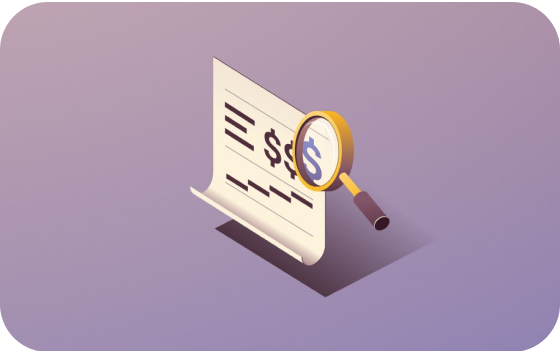A T4A slip is a tax document issued by Canadian businesses or organizations to report different types of income unrelated to regular employment income.
T4A slips are sent to the Canada Revenue Agency (CRA) and individuals to report payments like self-employment income, educational assistance payments, bursaries, annuities, and fellowships. A T4A slip also encompasses scholarships, retirement income, RESP payments, and artists' project grants. Businesses or organizations called "payers" issue the T4A tax slip to report these payments to the CRA.
Why do T4A slips matter?
The T4A slips are important because they help individuals file their tax returns correctly by including all forms of income they received.
For employers and other payers, issuing a T4A slip helps them meet their obligations to the Canada Revenue Agency and ensures all payments subject to income tax are reported. For individuals, receiving a T4A slip is necessary for accurately reporting their total taxable income when filing their tax return for the tax year.
What key information does the T4A slip include?
A T4A slip contains several important sections and boxes that report different types of income.
Main sections and boxes on a T4A slip include:
- Box 020 – Self-employed commissions: This box reports self-employment income, typically from commissions or freelance work.
- Box 028 – Other income: This box includes any other income that doesn’t fall under specific categories, such as special grants or payments that are not regular wages or salaries.
- Box 105 – Scholarships, bursaries, and fellowships: This section reports income from bursaries, scholarships, and fellowships received by students or researchers, which may be taxable.
- Box 016 – Pension or superannuation: This box shows pension payments or superannuation income, typically for retired individuals. It could also include Old Age Security (OAS) and Canada Pension Plan (CPP) payments.
- Box 024 – Annuities: This reports income from annuities, which are payments from an investment or insurance plan made over time.
- Box 196 – Registered Education Savings Plan (RESP): This box shows payments from an RESP, which helps families save for a child's post-secondary education.
- Box 202 – Registered Disability Savings Plan (RDSP): This section covers income received from an RDSP, a plan designed to help save for the long-term financial security of a person with a disability.
What are the T4A slip filing requirements for payers?
Payers, such as businesses or organizations, must issue T4A slips to recipients by the last day of February following the calendar year in which the income was paid. For example, if the income was earned in 2024, the T4A slip must be issued by February 28, 2025. This deadline ensures recipients have the necessary information to file their tax returns with the Canada Revenue Agency on time.
Once the T4A slips are issued to recipients, payers must also submit the slips to the CRA. This can be done electronically through the CRA’s online portal, the preferred method to avoid errors. If a payer has fewer than 50 slips to file, they can file them on paper, but electronic submission is recommended.
The submission must include all relevant details, such as the recipient’s social insurance number and the amounts for self-employment income, bursaries, annuities, and fellowships.
The CRA may impose penalties if a payer misses the deadline or files incorrect information on a T4A slip. Late filing penalties depend on how late the slips are submitted and how many were issued. Failing to report the right amount of taxable income or using incorrect boxes (like for old age security (OAS) or Canada Pension Plan (CPP) income) can also result in fines.
Payers should carefully check their submissions before sending them to the CRA to avoid penalties.
Common mistakes to avoid when preparing T4A slips
When preparing T4A slips, payers often make several common mistakes, which can lead to problems with the CRA and even penalties. These include:
- Incorrect Social Insurance Number (SIN): One of the most common mistakes is entering the wrong social insurance number. This can lead to issues with the CRA tracking the recipient’s tax return properly.
- Misreporting income: Payers may report the wrong type of income in the wrong box, such as reporting self-employment income or bursaries incorrectly. Each type of income (like annuities, fellowships, or educational assistance payments) has a designated box on the T4A form.
- Missing information: Some payers forget to include required information like CPP or OAS payments, or neglect to report income related to artists’ project grants, RESP, or RDSP payments.
- Late filing: Missing the last day of February deadline for issuing and submitting T4A slips can result in penalties from the CRA.
To ensure accuracy and compliance with Canadian tax and employment laws, employers and employees are advised to:
- Always verify that the recipient’s social insurance number is correct before submitting the slip. Errors here can delay the processing of the recipient’s tax return.
- These tools can help ensure you report all income, including self-employment income, bursaries, and fellowships, in the correct boxes.
- Maintain accurate and organized records of all payments throughout the tax year, including income related to RESP, RDSP, employment insurance, and pension adjustments. This will make the preparation process much smoother.
- Set reminders to ensure you meet the CRA’s deadline for issuing T4A slips to recipients and submitting them to the CRA. Timely submission helps avoid late penalties.
T4A slips vs. other tax forms in Canada
Canada has several different tax forms that report various types of income. The T4A slip is just one of them, and it’s important to know how they differ and when to use them:
- T4 slip: The T4 slip (Statement of Remuneration Paid) reports regular employment income, such as salaries, wages, and bonuses. It also includes deductions for CPP, employment insurance, and income tax. Employers issue the T4 slip to employees to show their taxable income for the year.
- T5 slip: The T5 slip (Statement of Investment Income) reports investment income, such as dividends, interest, and royalties. This form is typically issued by financial institutions, like banks or businesses that pay investment income.
When should you use a T4A slip vs. other forms?
- Use a T4 slip when reporting employment income for employees in Canada. Employers must issue this form to report wages, salaries, and deductions like CPP and employment insurance. It covers income for the calendar year and helps employees file their tax return with the Canada Revenue Agency (CRA).
- Use a T5 slip when reporting investment income, such as interest earned from a savings account or stock dividends. Financial institutions or companies that pay investment returns issue this form.
Best practices for managing T4A slips
Payers must manage T4A slips efficiently to ensure compliance with the CRA and avoid penalties. Here are some best practices that can help you:
1. Keep accurate records throughout the year
Ensure you track all payments made during the tax year, including self-employment income, bursaries, fellowships, and annuities. Organized records will make preparing T4A slips faster and more accurate.
2. Use payroll or accounting software
Using payroll or accounting software can help automate the preparation of T4A slips. These tools can calculate amounts for different types of income, such as self-employment commissions, artists' project grants, and educational assistance payments.
Software also helps ensure that the correct information, such as the recipient's social insurance number, is entered.
3. Ensure data security and privacy
Since T4A slips contain sensitive personal and financial information, such as social insurance numbers and details of income like annuities and pension adjustments, it's important to store this data securely. Encryption and secure storage systems protect against unauthorized access. Only authorized personnel should have access to this data to ensure compliance with privacy laws.
4. Submit T4A slips on time
Always meet the CRA deadline of the last day of February to issue and submit T4A slips for the calendar year. Late filing can result in penalties. Set reminders and use software to help ensure timely submissions.
Recent changes and updates to T4A slip requirements
For the 2023 tax year, there have been important updates to T4A slip requirements, primarily focusing on the Canadian Dental Care Plan (CDCP).
Beginning with the 2023 filing period, payers must now report whether recipients or their family members were eligible for dental insurance or coverage of any kind. This must be indicated in Box 015 – Payer-offered Dental Benefits on the T4A slip if the recipient had access to such coverage through their employer or other payer.
The new reporting requirement is mandatory for all cases where an amount is reported in Box 016 (Pension or Superannuation). Failure to report this information accurately may result in penalties. Five possible codes indicate the level of coverage, ranging from no access to coverage extending to the recipient’s spouse and dependents.
In addition, the CRA has reduced the threshold for mandatory electronic filing of T4A and other slips. Beginning in 2024, if a payer submits six or more information returns (such as T4A slips), they must be filed electronically.
These changes highlight the need for accurate record-keeping and timely form submissions to avoid penalties and ensure compliance with the new dental benefits reporting requirements.
Frequently Asked Questions about T4A slips
What is the difference between T4 and T4A?
The T4 slip is used to report employment income, such as wages, salaries, and bonuses, as well as deductions for CPP, employment insurance, and income tax. It is issued by employers to employees for work done in Canada. The T4A slip, on the other hand, is used to report non-employment income such as self-employment income, bursaries, annuities, fellowships, and pension payments. Payers issue T4A slips to individuals who received these types of income during the tax year.
What is T4A for non-residents of Canada?
Non-residents of Canada can also receive a T4A slip if they earned non-employment income, such as pension, self-employment income, or fellowships in Canada. Non-residents may be subject to withholding income tax by the Canada Revenue Agency (CRA), depending on their specific tax situation and any applicable tax treaties between Canada and their country of residence.
What is the minimum amount for T4A?
You must issue a T4A slip if specific types of payments exceed certain thresholds. For example, educational assistance payments from a Registered Education Savings Plan (RESP) or accumulated income payments to a subscriber must exceed $50 in the calendar year for a T4A slip to be issued.
Other forms of income, such as pension payments from a Registered Pension Plan (RPP) or Registered Retirement Savings Plan (RRSP) withdrawals, should be reported regardless of the amount. These do not have a minimum threshold and must be reported for any amount.
Special considerations:
- Statement of pension income, such as superannuation or registered pension plan (RPP) payments, is always reported on a T4A slip, regardless of the amount.
- Medical premium benefits, including any paid insurance related to health services or life insurance, must be included on the T4A slip when applicable.
- If you are paying income related to COVID-19 benefits, they must also be reported on the T4A slip for the tax year.
- For those in Quebec, QPP (Quebec Pension Plan) income is reported separately from CPP, and these payments are typically reported on RL slips.
- While union dues are usually reported on a T4 slip, any payments made to individuals related to self-employment or project-based work would still require a T4A slip.
Non-applicable payments:
- GST/HST rebates are not taxable and are not required to be reported on a T4A slip.
Rippling and its affiliates do not provide tax, legal, or accounting advice. This material has been prepared for informational purposes only, and is not intended to provide, and should not be relied on for, tax, legal, or accounting advice. You should consult your own tax, legal, and accounting advisors before engaging in any related activities or transactions.













































































